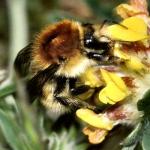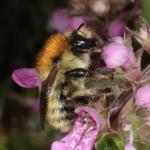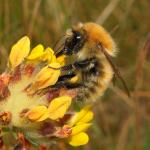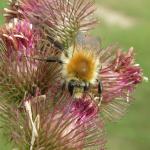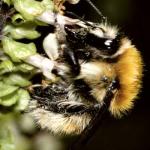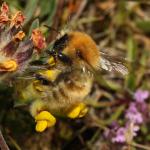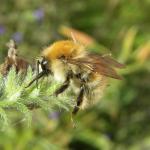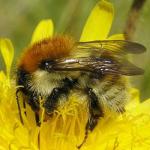Keys and general biology are found in Sladen (1912), Free & Butler (1959), Alford (1975) and Prŷs-Jones & Corbet (1991). This species is very closely related to Bombus muscorum but is more southerly in its distribution. B. humilis has undergone a major decline in its distribution, with most remaining populations being on extensive, although sometimes narrow, areas of coastal grasslands. This decline seems to be closely linked to the intensification of farming.
Intermittently present along the southern and western coasts of England and Wales, reaching furthest north on the Lleyn Peninsula and Anglesey. There are a few inland populations, most notably on Salisbury Plain, Wiltshire. In common with other bumblebees, relatively large areas of suitable habitat, in the order of ten square kilometres, are required to maintain viable populations. Widespread in Europe, as far north as southern Scandinavia, but declining in many places (von Hagens, 1994; Westrich, 1989). Also found throughout central Asia (Løken, 1973).
This species is not listed in either Shirt (1987) or Falk (1991). However, current research shows that this status may be in need of revision.
Strongly associated with areas of tall, but open, grasslands supporting a good proportion of perennial plants, especially those in the families Fabaceae, Lamiaceae and Scrophulariaceae.
Overwintered queens search for nesting sites during May and early June. Workers fly between June and September; males during August and September.
B. humilis queens found nests on the surface of the ground in moderately tall, open grassland. They may well use an old mouse nest as a base. The nest is covered with fragments of dead grass and moss which are gathered, initially by the queen and later by the workers.
The species will forage for nectar at a variety of plants, including yellow Asteraceae.
Bombus (Psithyrus) campestris has been recorded as a social parasite of this species in mainland Europe (Løken, 1984).


